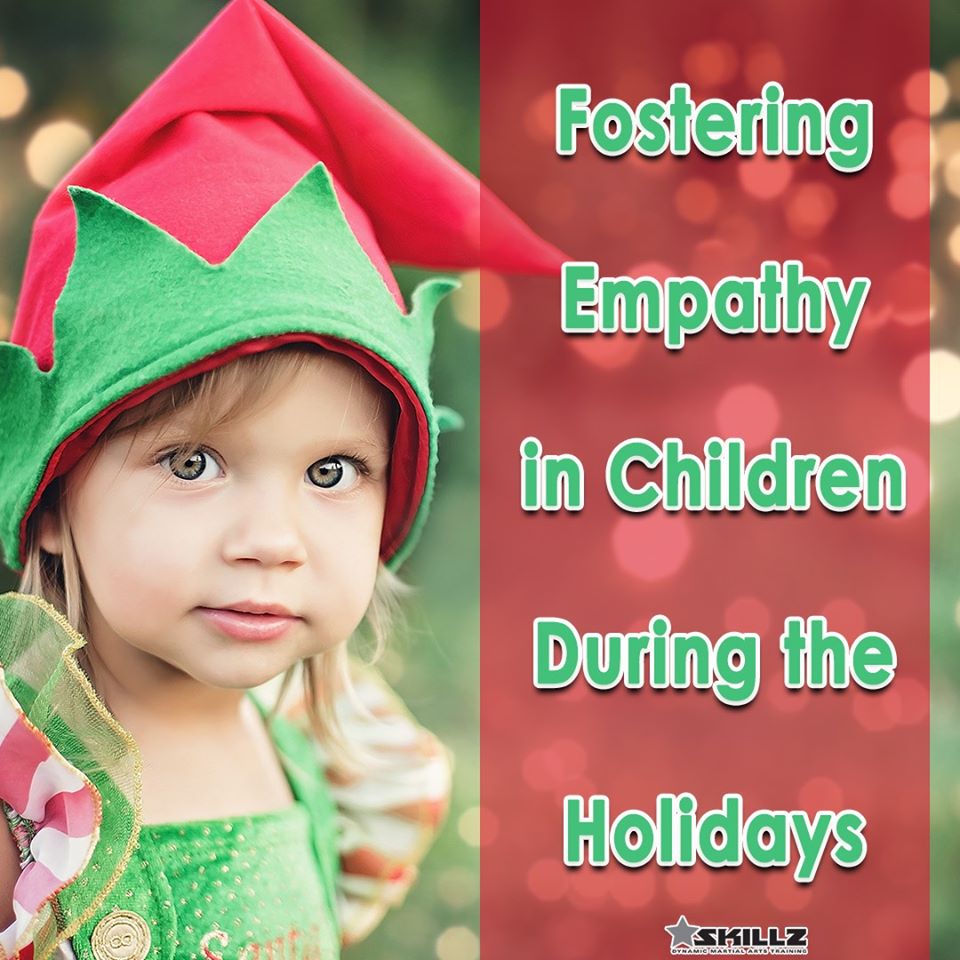
As children get older, they begin to tap into the cognitive side of empathy. This is because their executive functioning skills are more developed. This means that they are better able to understand others’ points of view, regulate their own emotions, and self-monitor. However, it is more natural for children to be selfish than empathetic. This is why it is important to give children experiences that exercise the empathetic muscle throughout childhood and adolescence.
‘Tis the season! A season of giving, a season of patience, a season of all things warm and inviting. Doesn’t it all sound magical? As we go into this time of year, the excitement fills the air and the anticipation of gifts and fun activities encompasses our very being, no matter what age. And while the spirit of the season surrounds us, the hustle and bustle often leaves parents exhausted and children focused only on the “gimme” of presents. To counteract this, it is important to revamp our priorities and utilize the holidays as a starting point for helping foster empathy in children.
The first step in doing this is helping children understand what empathy is. Being able to see things from another person’s view can be a challenge, especially the younger the child. The good thing is, we are all born hardwired with the ability to be empathetic. However, it doesn’t just evolve…empathy is developed through experiences and practice. Empathy is an emotional and cognitive experience.
As babies, empathy is mirrored as strictly an emotional reaction to a situation. For example, when one baby cries, the one next to it often begins crying as well. This is when mirror neurons in the brain are firing in response to the behaviour being observed. The same happens when babies mirror facial expressions even when they are only a few days old.
Even though children are not instinctively considerate of others, it is important to not dwell on that and, instead, find opportunities to work with them on this. When they exhibit selfish behaviours, parents should empathize with their child and then rephrase the situation to elicit a more empathetic reaction. In behaviour therapy, it is called “shaping a new response.”
When working on building empathy in children, there are many things parents can do to help. Giving children the opportunity to be part of the decision-making process when choosing an organization to donate to or volunteer for, is a great way to start. This helps them feel excited about giving and they learn generosity. Another important thing is to teach children to be thankful for things they have and the gifts they receive, no matter how small or if it’s not exactly what they wanted. Teaching gratitude helps children learn to appreciate what they have, and therefore helps them understand that not everyone has the same things. But above all, parents being a role model of empathy year-round will help children learn this concept.
The holidays are a wonderful time to spend moments fostering empathy in children. By teaching generosity, compassion, and gratitude, children have a better understanding of the true meaning of the holiday season. Making events of generosity a tradition throughout the year will solidify these lessons even further. In turn, we are shaping the next generation to be caring adults.